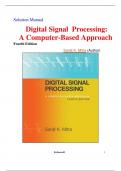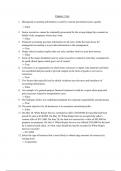Exam (elaborations)
Solution Manual - Digital Signal Processing: A Computer-Based Approach Fourth Edition ( Sanjit K. Mitra (Author) latest Editon
Solution Manual Digital Signal Processing: A Computer-Based Approach Fourth Edition Sanjit K. Mitra (Author)
[Show more]




